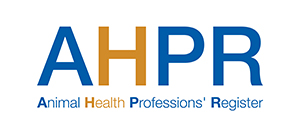Integrated land and water based physiotherapy (hydrotherapy) is the application of controlled physiotherapy techniques and prescriptive exercise delivered in a warm, sanitised aquatic environment.
HOW WE WORK
A range of individually tailored physiotherapy, hydrotherapy and rehabilitation treatment techniques, along with positive behaviour modification solutions aims to solve your dog’s mobility and fitness challenges.
We offer advanced aquatic treatments to include aquatic canine pilates (or “pawlates”); canine “tai chi”; body balance conditioning and natural balanced motion work.
Using canine ‘Therapeutic Handling’ techniques we work with your dog and gently guide and movement shape your dog into the hydrotherapy pool to achieve a calm and controlled entry. We always have “hands on contact” with your dog whilst administering their selected treatment techniques. Dogs are not allowed to dive in or swim unattended as this affects the therapeutic treatment and healing process.
You will be supported with specialist advice and have an individually designed treatment programme to meet your dog’s specific needs.
Whatever your dog’s age or problem we achieve real improvement so together you continue your timeless partnership.
We build a therapeutic bond with your dog to gain their trust and confidence where they choose to work actively with us in a connected, calm and focused way.
We employ ‘Canine Movement Enrichment’ techniques (functional canine enrichment uses movement exercises, posture training, body work and scent games to achieve calmness and wellbeing) such as Clinic Enrichment and Therapeutic Handling which are proprioceptive enriched and key to your dog’s individual treatment plan.
HOW WILL INTEGRATED LAND AND WATER BASED PHYSIOTHERAPY HELP MY DOG?
We love working with all ages and breeds of dog - the older dog is provided with the therapeutic care, support and management they need. The older dog will benefit from the buoyancy provided by the warm, sanitised water, which decreases concussive forces on potentially painful or arthritic joints. Pain is a central and consistent symptom for many senior canine patients and contributes to the cycle of disuse atrophy and progressive disability.
Water-based therapies help to make movement more comfortable, offering prescriptive exercise that is functional, technically correct, and muscularly challenging without being painful. Shorter sessions with more breaks may be beneficial, using therapeutic exercises such as rhythmic stabilization, joint compressions and patterning.
It is very beneficial for the younger dogs too, in fact, puppy hood is the best time to introduce your dog to hydrotherapy for both confidence building and energy burning. Many puppies can get over-walked in their younger years which can lead to joint damage and early on-set arthritis.
Therapeutic swimming is fantastic for them as they can burn energy safely without risking damage to young joints and bones while building up their confidence in water.
For the canine athletes and working dogs, our proactive approach maximises their fitness and skills specific to their role. They benefit physically from the cross training aspect and also psychologically.
Advantages include:
• Utilising commonly used performance muscle in a different way
• Increase use of muscles that are used minimally on land
• Increases joint flexibility due to greater ‘passive range of motion’ and ‘active range of motion’
• Eliminates concussive forces to reduce joint compression/stress
• Maximises cardiac output and pulmonary conditioning
• Provides a mental/psychological break from land training
• Maintains high training levels off season
• Allows return to performance sport with minimal training time
• Reduces injury risk at early season competitions
• Allows for intense exercise during warm, humid weather with no risk of overheating
Hydrotherapy complimentary to veterinary treatment can significantly improve the quality and rate of healing following surgery or traumatic injury. In these cases the appropriate use of hydrotherapy can help with rehabilitation and increase the chance of a successful return to full fitness.
THERAPEUTIC EFFECTS OF HYDROTHERAPY
Hydrotherapy has specific therapeutic effects on body tissues:
• Relief of pain, swelling & stiffness
• Muscle strengthening and maintenance.
• Alleviating muscle spasm and hypertonicity.
• Increased range of motion in joints
• Improves circulation and assists in the process of healing
• Cardiovascular fitness (heart & lungs)
• Increased tissue healing
• Increased speed and quality of recovery
• Increased soft-tissue extensibility
• Increased tone in hypotonic body parts
• Gait modification and gait re-education
• Increased proprioception
• Warming of the tissues through water temperature and increased metabolic demand by way of swimming stimulates the release of endorphins and enkephalins that contribute to improving mood, relaxing muscles and managing pain
CONDITIONS THAT BENEFIT FROM INTEGRATED LAND AND WATER BASED PHYSIOTHERAPY (HYDROTHERAPY)
Most dogs will benefit greatly from a combination of physiotherapy and hydrotherapy as a form of exercise. However it is essential to get advice from your Veterinary Surgeon before taking your animal for treatment. For the welfare and safety of your dog we will liaise with your Veterinary Surgeon prior to commencing therapy.
Any animal that requires improvements in: Core strength, proprioception, gait modification, flexion, extension, muscle bulk, cardiovascular and muscle endurance will benefit from hydrotherapy including those with: (the list is not conclusive so always ring and have a chat with me if you are unsure).
Developmental Conditions
Hip and Elbow dysplasia – especially useful for young dogs who are restricted to lead exercise
OCD
Patella Luxation
Degenerative Conditions
Osteoarthritis (DJD) primary and secondary to developmental conditions
Spondylosis
Pre and Post Surgical cases
Total Hip Replacement
Femoral Head and Neck Excision (FHNE)
Arthroscopy
Cranial Cruciate Rupture- TPLO/TTA/Lateral Suture
Patella Luxation
Neurological Conditions
Degenerative Myelopathy (DM)
Spinal Stenosis
Intervertebral Disc Protrusion/Degenerative Disc Disease
Fibro-Cartilaginous Embolism (FCE)
Cervical Vertebral Malformation
Spinal Injury/Trauma/Shock
Discospondylitis
Neuromuscular Disease
Peripheral Neuropathies
Soft Tissue Injuries
Tendinitis
Ligament strain
Tendinopathies,
Muscle strains/sprains
Obesity
(weight loss in conjunction with diet)
Increased core strength
Canine Movement Enrichment Techniques
Cross training for fitness
Musculoskeletal assessment
"Hands on" therapeutic handling








